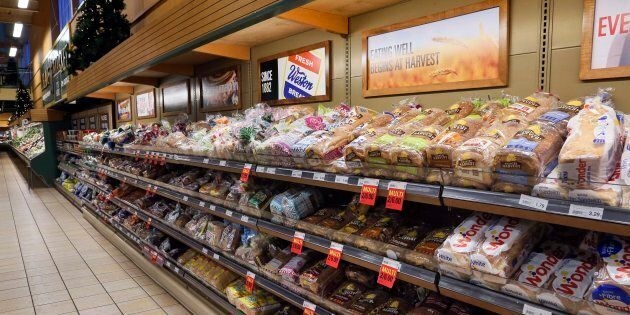What Are The Biggest Industries In Canada Today?
 |
| What Are Biggest Industries In Canada Today? Photo KnowInsiders |
Canada’s economic stability owes significantly to the government support the industries receive as well as legislation including free trade agreements with some of the world’s biggest economies. The trade partnerships Canada has with the European Union, Mexico, Japan, China, and the US have seen the growth of Canadian industries. There is also an almost seamless interaction of industries within the country owing to the advanced infrastructure which has facilitated easy transport of goods countrywide. Canadian industries have benefited from the hefty investment in research and development which has promoted technological development in Canadian industries and their considerable growth.
Top 5 Biggest Industries by Revenue in Canada in 2021
1. Commercial Banking
Revenue for 2021: $240.1B
Despite low interest rates and some hiccups in economic growth, the Commercial Banking industry in Canada has expanded over the five years to 2020. Banks have done an exceptional job of diversifying revenue streams and overcoming limits imposed by low interest rates and increasing regulations.
2. Gasoline & Petroleum Bulk Stations
Revenue for 2021: $202.7B
Companies in the Gasoline and Petroleum Bulk Stations industry in Canada manage bulk storage tanks and terminals for crude oil and petroleum products such as gasoline, diesel fuel, fuel oil and liquid petroleum gases. These bulk stations are often located near major refineries, ports and industrial centres to quickly and efficiently receive product and unload it to customers. These stations play an important role in the supply chain of crude oil and petroleum products.
3. Gasoline & Petroleum Wholesaling
Revenue for 2021: $127.0B
The Gasoline and Petroleum Wholesaling industry in Canada distributes petroleum products to retail gas stations, manufacturers and other customers. The price of industry products is tied to global crude oil prices, which can cause significant volatility for operators. Crude oil prices rose sharply in the years leading up to the reporting period due to growing global economic activity and rising demand, which prompted strong growth in revenue.
4. New Car Dealers
 |
| Photo JD Power |
Revenue for 2021: $125.0B
Over the five years to 2020, revenue for the New Car Dealers industry in Canada is expected to expand, albeit marginally. While demand for automobiles has been driven by healthy economic conditions during the majority of the five-year period, such as rising consumer confidence and low unemployment, the COVID-19 (coronavirus) pandemic has caused the reversal of many of these trends over the current year.
 Top 10 Biggest Industries In The US Today Top 10 Biggest Industries In The US Today We all know that the US economy is colossal, but just how large is it? Check out our list of 10 biggest industries in the ... |
5. Supermarkets & Grocery Stores
 |
| Photo HuffPost |
Revenue for 2021: $102.8B
The Supermarkets and Grocery Stores industry in Canada has experienced strong growth over the five years to 2020, which can be attributed to an expected spike in revenue in 2020 amid the COVID-19 (coronavirus) pandemic. Between 2015 and 2019, while rising levels of consumer confidence and slight growth in per capita disposable income provided an optimal business environment, the proliferation of supercentres stifled industry revenue as it increased price-based competition and provided customers with a one-stop shopping experience. Many consumers sought cost savings at grocery stores, stocking up on promotional items or trading down to private label brands.
Top 5 Biggest Industries by GDP in Canada in 2021
1.Manufacturing
Although the global financial crisis took its toll on Canada from 2008 to 2010, the country’s manufacturing industries recovered well and make up for 14% of Canada’s GDP. And, like never before, Canada’s automotive branch plants are back in full swing.
American and Japanese auto industries are attracted to Canada’s highly educated workforce and low labour costs making it a go-to destination for automobile manufacturing. Automotive parts production is one of the fastest-growing manufacturing sectors in the country.
It’s hard to ignore the fact that Canada’s key industries are booming. With the abundant natural resources, government incentives, and stellar workforce, it’ll continue to prosper for years to come.
| Manufacturing hotspots in Canada 1. Toronto Stats Canada reported that the Toronto Census Metropolitan Area (CMA) accounted for $98 billion in manufacturing sales. Automobile and aerospace industries are the major manufacturers here, with almost 5% of all workforce employees working in automobile manufacturing, and over 12% working in the manufacturing sector as a whole. Ontario is the largest manufacturing province in Canada and accounts for 47% of Canadian manufacturing sales. The province produces 59% of all cars in Canada, with companies such as Ford, Honda, Volvo, and Toyota manufacturing in the Toronto CMA. 2. Montreal Quebec is Canada’s largest aerospace equipment producer, with much of the activity clustered in Montreal. Montreal’s economy is mainly driven by aerospace equipment manufacturing, with companies such as Bombardier, Pratt & Whitney Canada, and Canadian Aviation Electronics (CAE) headquartered here. 6.5% of workforce employees here are in aerospace manufacturing alone, and Montreal accounts for over $62 billion in manufacturing sales. Though Montreal continues to be a manufacturing hub for aviation equipment, its unique geographical location along the St. Lawrence river combined with the fact that it is home to the world’s largest inland port makes this metropolitan city a natural draw for manufacturers. That said, some of the millions of tonnes of goods shipped from the port annually are also manufactured in the city, including millions of units of cosmetics made by L’Oreal Canada. 3. Edmonton Nicknamed the "Oil Capital of Canada", Edmonton's largest manufacturing industries are petroleum, coal products, and machinery manufacturing. This is no surprise as Alberta is well-known for its mining and petroleum industries. Machines manufactured in Edmonton are primarily used in the energy, agriculture, and construction sectors. Roughly 9.5% of the workforce in the province is employed in mining, gas, oil and machinery manufacturing, and over $38 billion is generated from Edmonton’s manufacturing sales. 4. Vancouver Vancouver is an unlikely candidate as a manufacturing hotspot, but food processing, wood processing, and electronics manufacturing are the city’s strengths. Vancouver’s information and communications technology sectors are growing quickly, thereby fueling growth of computer and electronic products manufacturing in the region. 5. Quebec City In contrast to Montreal, Quebec City’s manufacturing economy is smaller and broader—the city produces pulp and paper, processed food, metal and wood items, chemicals, and electronics. The city has over $16.5 billion in manufacturing sales. |
2.Service
Accounting for an incredible 80% of Canada’s GDP and employing nearly three-quarters of the entire country is Canada’s service sector. And, within the sector itself, industries like retail, business, education, and health make up the largest portions.
Although the strength of the Canadian dollar has hurt tourism numbers, Canada still has a strong tourism industry with most of its international travellers hailing from the United States. In fact, Canada’s retail sector, which directly relates to tourism, accounts for 12% of the GDP and that percentage is steadily growing.
3.Mining
 |
| Photo Export Development Canada |
Mining has been one of the primary industries in Canada from as early as the 16th century. The government heavily funds prospecting and mineral exploration, but there is a considerable proportion of foreign companies actively participating in the Canadian mining industry. Essential mineral products exploited in Canada include precious metals such as platinum, gold, and silver, base metals like nickel, copper, iron, lead, and zinc, diamonds as well as industrial minerals such as potash, limestone, and gypsum. Canada holds significant reserves of energy minerals including uranium and coal. Despite the heavy criticism against the environmental impact of the mining industry, Canada remains one of the leading mining nations and is identified as a center of mining expertise and finance globally.
The mining sector contributed $109 Billion, or 5%, of Canada's total nominal GDP. The industry's direct and indirect employment accounts for 719,000 jobs, accounting for one in every 26 jobs in Canada.
4.Energy
Canada is ranked at the top of the global leader of energy production and exports some of the energy that they create. The net energy products exports in the country accounted for about 2.9% of the GDP in 2009. Canada holds vast oil and gas reserves that are concentrated in the Northern Territories, Alberta, and British Columbia. The oil sands of Athabasca put Canada at third in size of global oil reserves after Venezuela and Saudi Arabia. Hydroelectric power is a common and inexpensive source of energy in the country. The availability of cheap energy has enabled the growth and development of several crucial industries such as the aluminum industries in Quebec and British Columbia.
5.Agriculture
Canada is a major supplier of agricultural products especially wheat and other grain products. Asian markets and the US are the major importers of Canadian grain produce. The agriculture sector in Canada receives significant support and subsidies from the government. Forestry is also a healthy contributor to Canada’s economy. Forests cover about 42% of the land acreage in Canada making for the vibrant forestry industry. Canada ranks second among the largest exports of forestry products. The agricultural sector provides 2% of the population with stable and well-paying jobs. Over the span of the 20th century, Canada saw a decline in the proportion of the population that is devoted to agricultural activities, but this industry remains vital to the GDP of the country.
Top 5 Industries Prospering In Canada
1. Agriculture
When it comes to wheat and grains, Canada has it covered.
In fact, Canada is one of the largest suppliers of agricultural products in the world. Due to its strategic location Canada exports most of its crops to its big brother of the south, America.
As part of the World Trade Organization (WTO), Canada practices fair-trading by ensuring whatever it puts on the market agriculturally doesn’t influence the price of crops in other countries. Canada’s agricultural sector is steadily growing every year and accounts for 8% of the country’s Gross Domestic Product.
2. Energy
Due to its abundance of oil and natural gas, Canada has quickly become a world leader in energy resources.
Canada not only has the third largest oil reserve in the world, it’s also a world leader in hydroelectric power with Quebec, Ontario, and Saskatchewan all using vast amounts of hydroelectric energy.
Because of the abundant energy resources available, Canada’s oil exporting and other energy related products make up for 2.9% of the country’s GDP. Additionally, Canada has adopted solar and wind energy production as the next major industry in the energy sector ensuring continued prosperity.
3. Technology
Although it’s for the most part undervalued, Canada’s technology industry is one of the strongest in the world.
And, in part thanks to the Canadian Start-up Visa, which is a government Visa aimed at bringing in new tech companies from all over the world, Canada will continue to change the world’s technology landscape.
The government Visa will undoubtedly bring the brightest minds to Maple Leaf Country and give places like Silicon Valley and India a run for their technology. Canada’s technology industry is currently prospering the most in areas such as digital media, wireless infrastructure, E-commerce, and general Internet services.
4. Services
Accounting for a whopping 80% of Canada’s GDP and employing almost three quarters of the entire country is Canada’s service sector. And, within the sector itself, industries like retail, business, education, and health make up the largest portions.
Although the strength of the Canadian dollar has hurt tourism numbers, Canada still has a strong tourism industry with most of it’s international travelers hailing from the United States. In fact, Canada’s retail sector, which directly relates to tourism, accounts for 12% of the GDP and that percentage is steadily growing.
5. Manufacturing
Although the global financial crisis took its toll on Canada from 2008 to 2010, the country’s manufacturing industries are on the rebound and make up for 14% of Canada’s GDP. And, like never before, Canada’s automotive branch plants are back in full swing.
American and Japanese auto industries are attracted to Canada’s highly educated workforce and low labor costs making it a go-to destination for automobile manufacturing. Automotive parts production is one of fastest growing manufacturing sectors in the country.
 Top 10 Biggest Industries In The UK Today Top 10 Biggest Industries In The UK Today What are the biggest industries in the UK? We have a lot of ways to classify based on revenues, employment and number of companies. |
 Top 10 Biggest Industries In The US Today Top 10 Biggest Industries In The US Today We all know that the US economy is colossal, but just how large is it? Check out our list of 10 biggest industries in the ... |
 Top 17 interesting facts about Canada! Top 17 interesting facts about Canada! Facts about Canada: Have you ever gone to Canada? There is something more about this interesting country. Below are 17 little interesting facts that might ... |



























